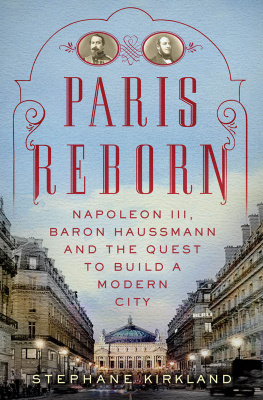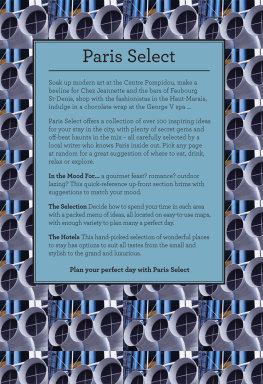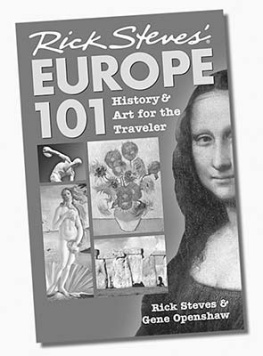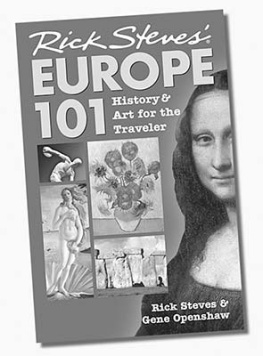
The author and publisher have provided this e-book to you for your personal use only. You may not make this e-book publicly available in any way. Copyright infringement is against the law. If you believe the copy of this e-book you are reading infringes on the authors copyright, please notify the publisher at: us.macmillanusa.com/piracy.
CONTENTS
PROLOGUE
From the outset Louis-Napolon Bonaparte had a great ambition for Paris. He wanted to transform it into the most modern and functional city in the world, a city where wide, convenient boulevards suitable for modern transportation would replace narrow streets, where elegant ladies could walk without treading in filth and decay, where new neighborhoods would rise to house the swelling population; he wanted a city that would represent the principles of order and modernity of his presidency. A pragmatist and an idealist, Louis-Napolon was committed to personally overseeing the realization of this vision.
The prince-president, as he was still called at the timethe future Napolon IIIdid not yet know that his prefect of the Seine, Jean-Jacques Berger, would not be the man to realize this vision. Nor did he have any idea of the difficulties and tribulations that he would encounter. But, incredibly, the vision of Louis-Napolon became a reality. Thanks to his impetus, Paris became the archetype of a modern, functional city, still perceived today as the epitome of urban beauty.
In most accounts, especially those available in English, the story focuses on Baron Georges-Eugne Haussmann. In reality, it is impossible to grasp the story of the Second Empire transformation of Paris without understanding the fundamental role of Napolon III, the man who inspired and initiated it. More deeply, the transformation of Paris would not have been possible without the convergence of a whole array of social, cultural, and economic factors and the contributions of many individuals. To begin and end the story with Baron Haussmann is to fall into a historiographical trap, and to miss what makes this story so compelling.
From our perspective, the transformation of Paris can hardly be seen as unequivocally positive. It was a heavy-handed enterprise, which achieved its ends at tremendous human and cultural cost and wiped from the map an old, much-loved Paris that we will never know. The work of a despotic regime, it was all too close in approach to the egomaniacal urban transformations of twentieth-century dictatorships that, in some cases, it inspired. Still, the Second Empire rebuilding of Paris was responsible for creating one of the worlds great cities, a destination to which millions flock every year. There can be no question as to Pariss beauty and allure, nor to its functional suitability as a major city of the industrial era.
At a time when the quality and sustainability of our urban environment seems to be rising rapidly among our priorities, Paris makes a timeless case study. It is one of historys most extravagant examples of urban reinvention, with a surprisingly relevant set of lessons, both instructive and cautionary. While simple, easy-to-categorize narratives are superficially satisfying, it is the grain of the story, the impossibility of fully reconciling all its elements, that makes it not only fascinating but also illuminating.
One
IN THE SHADOW OF VERSAILLES
The Seine was filled with boats carrying wine, timber, stones, and flour from the provinces and sugar, silk, spices, and other exotic goods from the colonies. On the numerous landings up and down the river, workers moored the crafts and unloaded the cargo. Around the place de Grve, the streets were crowded and hectic with pushcarts, horse-drawn carriages, cattle, and pedestrians. In the nearby market district of Les Halles, merchants removed vegetables, meat, fish, and cheese from carts and displayed them on the ground amid shouts and arguments. Across the river, on the Left Bank, the clergy and seminary students moved about in their cassocks while booksellers stood before their shops and messenger boys ran errands. Throughout the city, tailors, cobblers, blacksmiths, and basket-makers plied their trade. The year was 1749. Paris, the largest city in Continental Europe, was abuzz with activity.
Paris was a rich and impressive city. It was home to the Palais de la Cit, the Palais du Louvre, and the Palais des Tuileries, legendary centers of French power. There were churches of remarkable beauty, filled with sculptures, stained glass, and other artwork. There was the towering Italianate Htel de Ville (City Hall); the veterans residence at the Invalides, with its massive glittering dome; and the Collge des Quatre-Nations, with its distinguished facade facing the Seine.
A visitor from a tidy Dutch town or from Britains North American colonies may, nevertheless, have been surprised to discover that Paris was not, by any stretch, a clean and well-ordered city. The air was foul, the drinking water was unsafe, and the traffic was chaotic and dangerous. The city lacked key amenities, such as a proper market, a sufficient number of bridges, structured embankments, and a reliable supply of drinking water. Paris was a hectic and vibrant city, but it did not resemble the capital of a country that fancied itself the most refined and sophisticated in the world.
The jewel in the crown of the Kingdom of France was a much smaller town, one that lay some ten miles to the southwest. Its name, unknown a century before, was now legendary: Versailles.
Built as a seat for King Louis XIV and his court, the town of Versailles was symmetrically arranged around its great heart, the palace. For close to a hundred years, Frances most renowned artists and artisans had been at work making this piece of uninhabited marsh the most glorious place in Europe. Visitors from the world over marveled at its grandeur and sought to imitate it at home.
Versailles had been created precisely so that it could be a place of order at a safe distance from the volatile and violent Paris streets. Its creation may have been in large part due to vivid personal memories from Louis XIVs youth: At age ten, the young king had twice had to flee his capital city; at fourteen, he had watched from the heights outside Paris as the troops loyal to him braved the fire of the cannons of the Bastille to allow him to reenter the city after thirteen months of absence. Louis XIV would not again allow the Paris populace, so easily manipulated by disgruntled princes and dukes, to threaten the French monarchy. In 1682, he moved the court away from the influences of Paris to Versailles, where he could exercise complete power.
Louis XIVs reign nevertheless brought some important architectural contributions to Paris, including the Invalides, the Collge des Quatre-Nations, and the Hpital de la Salptrire. His decision, in 1676, to demolish the city walls and turn them into broad thoroughfares was the genesis of the Grands Boulevards, which were to become Pariss most popular public spaces.
Louis XIVs great-grandson and successor, on the other hand, did almost nothing for Paris. King Louis XV, who reigned from 1715 to 1774, cared little about the numerous shortcomings of the urban environment, about the inconveniences, the dangers, and the risks of disease. Holed away in his gilded enclave, he focused his entire attention on the affairs of the court, the diplomacy required to maintain a kingdom with holdings that stretched from Louisiana to India, and, not least, on satisfying his leonine sexual appetite for very young girls.
The political environment in mid-eighteenth century Paris was toxic. The city magistrates had challenged the royal authority by refusing to implement a new tax wanted by the king. Vulgar and vicious satirical songs were circulating about the king and his mistress, Madame de Pompadour. The minister of the navy, the count de Maurepas, was sacked and banished from Paris for having penned, or at least imprudently repeated, such a song. And the philosopher Denis Diderot languished in the dungeon of the Chteau de Vincennes for the crime of having suggested that the workings of the human body could be studied by means of reason rather than dogma.
Next page





